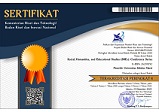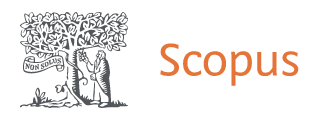Improving a Skills of EFL Students Using Duolingo in a Rural Madurese School
Abstract
Speaking skill is one of the main challenges for EFL (English as a Foreign Language) learners, especially in rural areas with limited access to authentic communication and digital technology. This study aimed to examine the effectiveness of the Duolingo application in improving the English-speaking skills of eighth-grade students at MTs Nurul Huda Al Maroniyah Sampang. This research employed a pre-experimental one-group pretest-posttest design with a total of 30 students as participants. The research procedure consisted of a pretest, three weeks of treatment using Duolingo, and a posttest. The main research instrument was a speaking test that assessed five aspects: fluency, grammar and accuracy, pronunciation, vocabulary use, and comprehensibility, scored on a 1–5 Likert scale. Data from the pretest and posttest were analyzed using the Wilcoxon Signed-Rank Test via SPSS 25 to determine the statistical significance, and effect size was calculated to measure the magnitude of improvement. The results revealed a statistically significant improvement in students’ speaking skills (p = 0.000) with a very large effect size (r = 0.861). These findings indicate that Duolingo can be an effective, engaging, and practical tool for developing speaking skills in resource-limited educational contexts, particularly in rural Islamic junior high schools in Indonesia. Future studies are recommended to explore the combination of Duolingo with live speaking practice or compare its effectiveness with other mobile-assisted language learning applications.
Keterampilan berbicara merupakan salah satu tantangan utama bagi siswa EFL (English as a Foreign Language), terutama di daerah pedesaan yang memiliki akses terbatas terhadap komunikasi autentik dan teknologi digital. Penelitian ini bertujuan untuk mengetahui efektivitas aplikasi Duolingo dalam meningkatkan kemampuan berbicara bahasa Inggris siswa kelas VIII MTs Nurul Huda Al Maroniyah Sampang. Penelitian ini menggunakan desain pra-eksperimental one-group pretest-posttest dengan total 30 siswa sebagai peserta. Prosedur penelitian meliputi tahap pra-ujian, perlakuan menggunakan aplikasi Duolingo selama tiga minggu, dan pasca-ujian. Instrumen penelitian berupa tes berbicara yang menilai lima aspek, yaitu kefasihan, tata bahasa dan ketepatan, pelafalan, penggunaan kosakata, dan keterpahaman, dengan skala penilaian Likert 1–5. Data pretest dan posttest dianalisis menggunakan uji Wilcoxon Signed-Rank melalui SPSS 25 untuk melihat signifikansi perbedaan, serta dihitung ukuran efek (effect size) untuk mengetahui besar pengaruh perlakuan. Hasil penelitian menunjukkan peningkatan kemampuan berbicara yang signifikan secara statistik (p = 0,000) dengan ukuran efek yang sangat besar (r = 0,861). Temuan ini menunjukkan bahwa Duolingo dapat menjadi alat yang efektif, menarik, dan praktis untuk mengembangkan keterampilan berbicara di lingkungan pendidikan yang minim sumber daya, khususnya di madrasah tsanawiyah pedesaan di Indonesia. Disarankan agar penelitian selanjutnya mengeksplorasi kombinasi Duolingo dengan praktik berbicara langsung atau membandingkan efektivitasnya dengan aplikasi pembelajaran bahasa lainnya.
Keywords
Full Text:
PDFReferences
Budiyanto, D., & Ridho, M. R. (2024). THE EFFECT OF DUOLINGO IN TEACHING SPEAKING AT THE EIGHTH GRADER. English Community Journal, 8(1), 39–47.
Burston, J. (2015). Twenty years of MALL project implementation: A meta-analysis of learning outcomes. ReCALL, 27(1), 4–20. https://doi.org/10.1017/S0958344014000159
Charlotte Smith, R., Monique Schaper, M.-, & Aki Tamashiro, M. (2023). A research agenda for computational empowerment for emerging technology education. Volume 38. https://doi.org/10.1016/j.ijcci.2023.100616
Creswell, J. W. (2009). Research Design: Qualitative, Quantitative, and Mixed Methods Approaches (3rd ed.). SAGE Publications.
Dörnyei, Z., & Dewaele, J.-M. (2022). Questionnaires in Second Language Research. Routledge.
Elgi, B. (2024). Students’ Perception Using the Duolingo Application in Speaking Activities in State Junior High School 4 Langgam. State Islamic University of Sultan Syarif Kasim Riau.
Ghozali, I. (2018). Aplikasi analisis multivariate dengan program IBM SPSS 25 (Edisi 9). Semarang: Badan Penerbit Universitas Diponegoro.
Hernadijaya, N. S. (2020). The use of duolingo application to enhance junior high school student’s English vocabulary. RETAIN, 8(2), 17–24.
Kim Y, J. The Effects of Mobile-Assisted Language Learning (MALL) on Korean College Students’ English-Listening Performance and English-Listening Anxiety. (2017, December 4). Dec. 4-6, 2017 London (UK) ICEEET-2017, ICABES-2017, ICCATE-2017, ICLSSE-17 & LBMCSR-2017. Dec. 4-6, 2017 London (UK). https://doi.org/10.15242/heaig.h1217424
Kusuma, I. (2021). Speaking Issues Faced by Indonesian Students during Classroom Discussions in the US. Electronic Journal of Foreign Language Teaching, 18(1). https://www.researchgate.net/profile/I-Putu-Indra-Kusuma/publication/350121275_Speaking_Issues_Faced_by_Indonesian_Students_during_Classroom_Discussion_in_the_US/links/60521937299bf173674ddfd5/Speaking-Issues-Faced-by-Indonesian-Students-during-Classroom-Discussion-in-the-US.pdf?origin=journalDetail&_tp=eyJwYWdlIjoiam91cm5hbERldGFpbCJ9Mobile-assisted language learning. (2023). In Wikipedia. https://en.wikipedia.org/w/index.php?title=Mobile assisted_language_learning&oldid=1145998911
Martin, F., Betrus, A. K., & Sugar, W. (2019). Digital Media for Learning. Springer Nature Switzerland AG.
Newton, J. M., & Nation, I. S. P. (2021). Teaching ESL/EFL listening and speaking (Second edition). Routledge, Taylor & Francis Group.
Nushi, M., & Eqbali, M. H. (2017). Duolingo: A Mobile Application to Assist Second Language Learning. Teaching English with Technology, 17(1), 89–98.
Smith, R. C., Schaper, M.-M., Tamashiro, M. A., Van Mechelen, M., Petersen, M. G., & Iversen, O. S. (2023). Computational Empowerment in Technology Education. International Journal of Child-Computer Interaction, 35, 100540. https://doi.org/10.1016/j.ijcci.2023.100540.
Sugiyono. (2013). Metode Penelitian Kuantitatif, Kualitatif dan R&D. Alfabeta.
Refbacks
- There are currently no refbacks.





